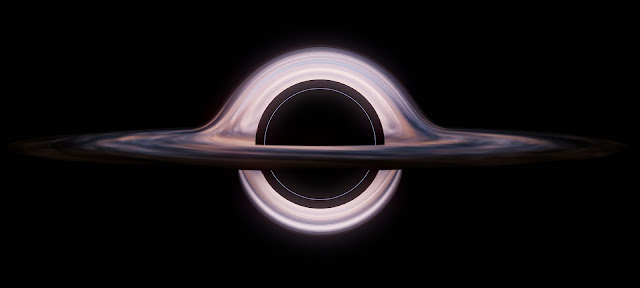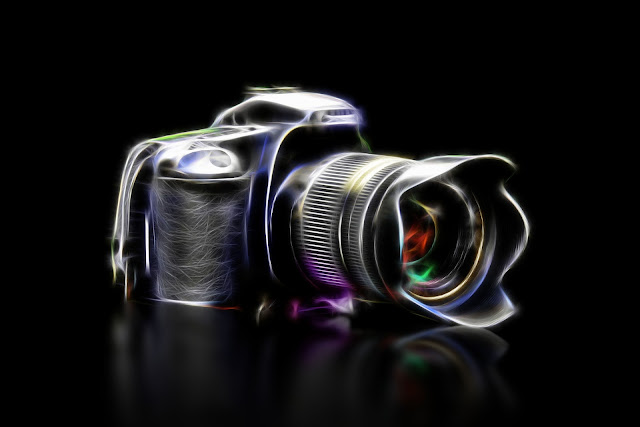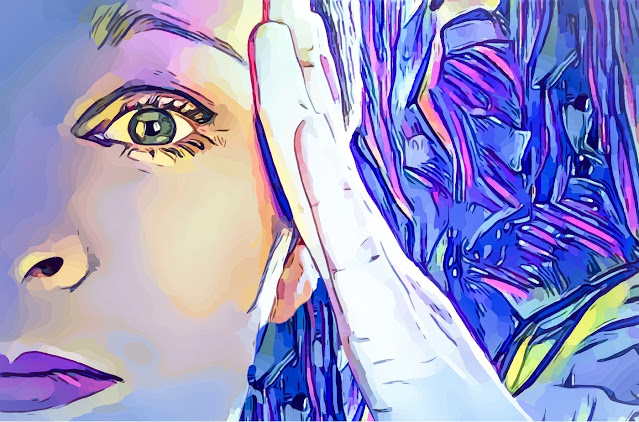The subject of life itself has been an aged-long mystery of thinking man.
This very mystery has fueled and sparked countless minds from thinkers, scholars, and philosophers, even inquisitive laymen who have dared to venture into this unceasing search and quest for conclusions that might unveil some meanings to the spectrum of life.
Sometimes men had to travel far and wide in hope of finding enough answers to appease their restless thoughts for solutions that could help them resolve many of their daily problems by having greater insight into life’s mysteries. Then, by raising their own cognitive perceptions of their surrounding enigmas allowed them to make better decisions and gained more control over their lives, but it didn’t come without great sacrifice, suffering and fruitless hours of despair.
One will never know if one never asks or looks.
Each new path of understanding that they discovered always led to broader questions, which instigated man further into this lifelong pursuit of finding out what life is all about. These perplexing questions always presented them with many unknowns and confusions.
At times, some of these mysterious unknowns that were faced by man appeared to act or even mentally feel like black holes. Where it never wants to tell you the truth and desperately keeps pulling inwards any possible clues that might reveal what they are.
So, could man eventually know everything about life in this universe?
Well, it’s a question that still begs to be fully answered with complete certainty.
Some people might say that life comprises many answers. Others might say that it’s a sole answer of consciousness that could be achieved through much enlightenment or revelation. In different instances, you could find people who might feel that it’s impossible to ever answer any of those life burning questions that have been around for many ages.
At this moment, the answer could be anyone’s guess, but so far, in more recent times man has made much progress to increase his understanding of life. If one were to look at today’s world, it could be considered retrospectively to some degree an “Age of Enlightenment” that is trying to get through its formative stages.
There’s still endlessly more to be known about life, but based on what we know, what does life have to do with art?
Biotic Imprints of Life
In attempting to explicate the subject of life for oneself, it could be useful if one first reviews the basic definitions of the word “Life” that are commonly known to man. So, one can see where one is going in relation to art for a possible connecting-answer.
Then, one might be able to observe, evaluate and extrapolate from there, but one might need to look conceptually at every nook and cranny.
These are some basic definitions for life:
1. The state that differentiates animals and plants from in organic matter, as well as the ability for growth, reproduction, functional activity and continuous change before death.
2. Living entities and their activities.
3. The existence of an individual human being or animal.
4. A specific type of aspect of an individual’s existence.
5. The time between the birth and death of a living thing.
6. Vitality, verve, or energy.
If you go through several dictionaries at home, you’ll find the above common definitions listed for the word life.
Now, that these basic meanings got reviewed, one could see that it has to do with living things that are alive and their existence. However, it does exclude all inorganic things, which doesn’t consist of any living matter.
Then, if one starts contemplating the subject of life, it might give rise to such questions as, why are we alive, or how did life start?
It would for sure stimulate much thought in the direction of finding the answers to these life mysteries that continues to puzzle man to a certain extent in modern times, but new discoveries are still emerging. Meanwhile, many remain optimistic that one day these profound questions would eventually get answered.
Even though, man doesn't understand the subject of life fully, a person could at least give it a shot at tracing the imprints left behind by life throughout the ages for clues in how life is art. So, they can then try to develop their own conclusions.
That would immediately bring one to the question, when did life start on Earth?
Based on empirical research by man, it’s known that life started on earth several billions years ago through many observations of ancient rocks and fossils that gives evidence of life as early as that.
Further, life on this blue planet could also be much older, if one looks at the fact that it’s based only on available evidence. The earth is constantly as part of its natural process morphing itself with endless new creations.
Eventually, around half a billion years ago, the first animals on earth appeared in its most basic form. Then, until more recently, a few million years ago, the first human emerged in Africa. That’s much earlier than Homo sapiens, which only came about a quarter of a million years ago.
If there is life anywhere, there should be art present in its most basic form.
When examining the topic of art with regard to life, it tends to have a sudden connotation that art only applies to humans and their creativity, but what about the rest of life?
It’s obvious that humans are creative by being more sentient and thinking in comparison to any other life forms, but regardless of that, other living things are alive and endlessly creating in their own way.
If one were to take a moment and stand up in the middle of the room. Then slowly turn 360-degrees while carefully looking at every object and feature in that space, you’ll notice that anything in front of you has some sort of aesthetic value.
That artistic value is always a matter of perspective, whether one is mentioning individual views or agreed-upon ideas, which can vary completely from country to country down to the microcosms of towns and cities.
Sometimes people could argue that anything found to be broken doesn’t have any artistic value at all. If damaged, degraded or destroyed from its original artistic intention, it could be a reasonable argument. Again, this could come down to the way one is looking at things. It could potentially still be called art, if that was the intention or significance given to it later on for that new creation.
It doesn't particularly mean that all artistic value in something, altered by life, is now gone. Instead, one could look at it as a form of artistic transformation.
Actually, there is a field of art that is not commonly known to others which embraces various extraneous items into a new artistic form, including elements resulting from destruction. It’s called “Assemblage”.
The integration of ordinary objects into an artistic composition, produces this artwork. If you get to meet an artist who is really into this field of art, they would normally call it, “Compositional Assemblage”.
Also, assemblage requires one to artistically put things together by whatever means. Whether it’s glue, nails, tape or whatnot to create a final masterpiece. It usually takes patience, hard work and attention to detail if one is interested in working in this field, but it could be very rewarding and fruitful.
Someone’s junk might be someone else’s priceless possession.
If you get involved in this field, you’ll find that some of these artists are going around searching for random broken or unwanted items. These items could be a damaged violin or some sort of scrapped metal, which they found and cut up into smaller, interesting-pieces. Then, they might use part of those chopped-up pieces, so it gets combined with other unusual articles that they probably found at a local garage sale. After that, they created something that could be deemed as out of this world.
This kind of artwork tends to be unique by the fact that they are extraneous items that were meticulously pieced together into a new form.
One must look for artistic potential in things.
Therefore, if one were to examine the subject of compositional assemblage and those artists who are working behind the scenes to produce such work, one might discover an interesting fact. That a person doing this kind of artistic work must have to some degree a desire or ability to find artistic value in other things that usually could be considered worthless by others.
In view of all the above, art itself could have a potential of embracing all that we do. Thus, it would seem fair to include other life forms as part of the larger picture when it comes to the subject and creation of art.
Then, one could look at lesser life forms from the original microscopic level where it all started billions of years ago from their multi-cellular evolutions leading to present day. It could be deduced that all their creations up to now are all biotic imprints of art.
Some could assert based on their perspective that art is not life, but life is art. If there’s no life, there couldn’t be any art all in the first place to be created or behold. It requires the presence of a living entity, small or large, to create it, whether one is talking about things that are just alive, sentient or thinking.
One could then shift views and say that art is life, but how could that be?
The only way that art could be life is if life itself is an embodiment of art. At which point, the process of procreation that brings forth a living entity could be regarded as a final artistic creation. This implies as well that life doesn’t only embody art, but can create it.
Therefore, this explication has come full circle with the fact that, if life didn’t exist in the first place, there couldn’t be any art at all, so Life is Art.
Well, if one were to embrace the above as a factuality from their own personal conclusion, while conceiving the entirety of existence, could there actually be a chance that life is not the only influential presence producing artistic creations?
Markings of Chaos
The entirety of the material world aside from life, it’s where chaos is king.
Chaos could be perceived as a never-ending ripple in time and space that continuous to force itself upon existence as the sole ruler of this universe. Its sole eternal foe is life, which endlessly strives to tame it, but chaos seems to be at every front.
When attempting to view chaos in its basic form, one could assume that it’s an invisible force disguised as matter, which permeates in every direction and always formidably present.
Chaos is always leaving behind an artistic marking anywhere it goes.
If life isn’t leaving its artistic imprints upon chaos, chaos is stamping its artistic markings upon life. Thus, it could appear as if there is a territorial battle on the subject of art between life and chaos, which are constantly trying to outdo each other.
So, if one were to envision the entirety of existence, it could be perceived that chaos might have the upper hand on this artistic fight at the moment. Its edge over life could be seen as completely unfair by anyone daring to stare at chaos’ biggest guardians, notoriously known as black holes.
The artistic value of chaos is only relative to life’s perspective.
These relentless singularities that are eternally churning through time and space could be an indication of how desperate chaos is to keep life and the universe in check by whatever means possible to retain its artistic reign and precious markings.
Hence, life has much evolving to do before it could conquer these mighty foes to achieve a harmonious conquest of art.
If you ever found yourself totally riveted at the night sky, you could understand the awe and wonder that chaos can bestow despite its destructive force. Even Mother Nature on our blue planet can easily render much evidence of chaos’ artistic touch.
Thus, the question arises, if art has been around since the birth of existence?
At this point, if one starts mulling over such a question, there is a chance that you might start noticing some interesting phenomena. Where existence is presenting endless patterns and rhythms for one to behold as they flow through time and space, manifesting their creative essence.
It would definitely lead to lingering thoughts of the probability that there might be a universal artistic feature shared by all existence.
The DNA of the Cosmos
The warp and woof of existence is teeming with zillions of riddles that could only leave any sentient being in eternal contemplation for striving to grasp such vast knowledge.
Amongst these mysteries, the one subject that has been nagging man’s thoughts for eons in hope of an actual answer is how did life and chaos came into existence in the first place.
This subject remains utterly debatable in modern times, as it continuous to riddle man with many unknowns. Man’s wonders and thoughts about it would only be brought to rest with tangible, conclusive proof. Many still remain quite confident that new insights towards the broader mysteries of existence would be unfolded in time with man’s unceasing desire to know.
Always strive for your own conclusions after close examination.
Even though, such mysteries might seem ungraspable with man’s current level of understanding of the universe, one can still decide to come up with one’s own personal conclusions about existence. On that account, such conclusions, determined by one, could to a degree reflect one’s level of mental freedom.
In that respect, let's try to explicate a common factor between life and chaos in relation to art, if humanly possible, based on one’s own understanding.
One could dare make a personal conclusion based on all the above observations and extrapolations regarding life and chaos and their artistic impressions upon existence.
As different factors move through time and space, one could say that their imprints and markings are both potentially a singularity in their artistic essence.
Thus, these imprints and markings of life and chaos are impressions that don’t belong to neither of them, but the Cosmos itself.
Thereby, aesthetics must be the DNA of the Cosmos.
Written by,
Nathaniel Bernard—Art Blogger















Comments
Post a Comment